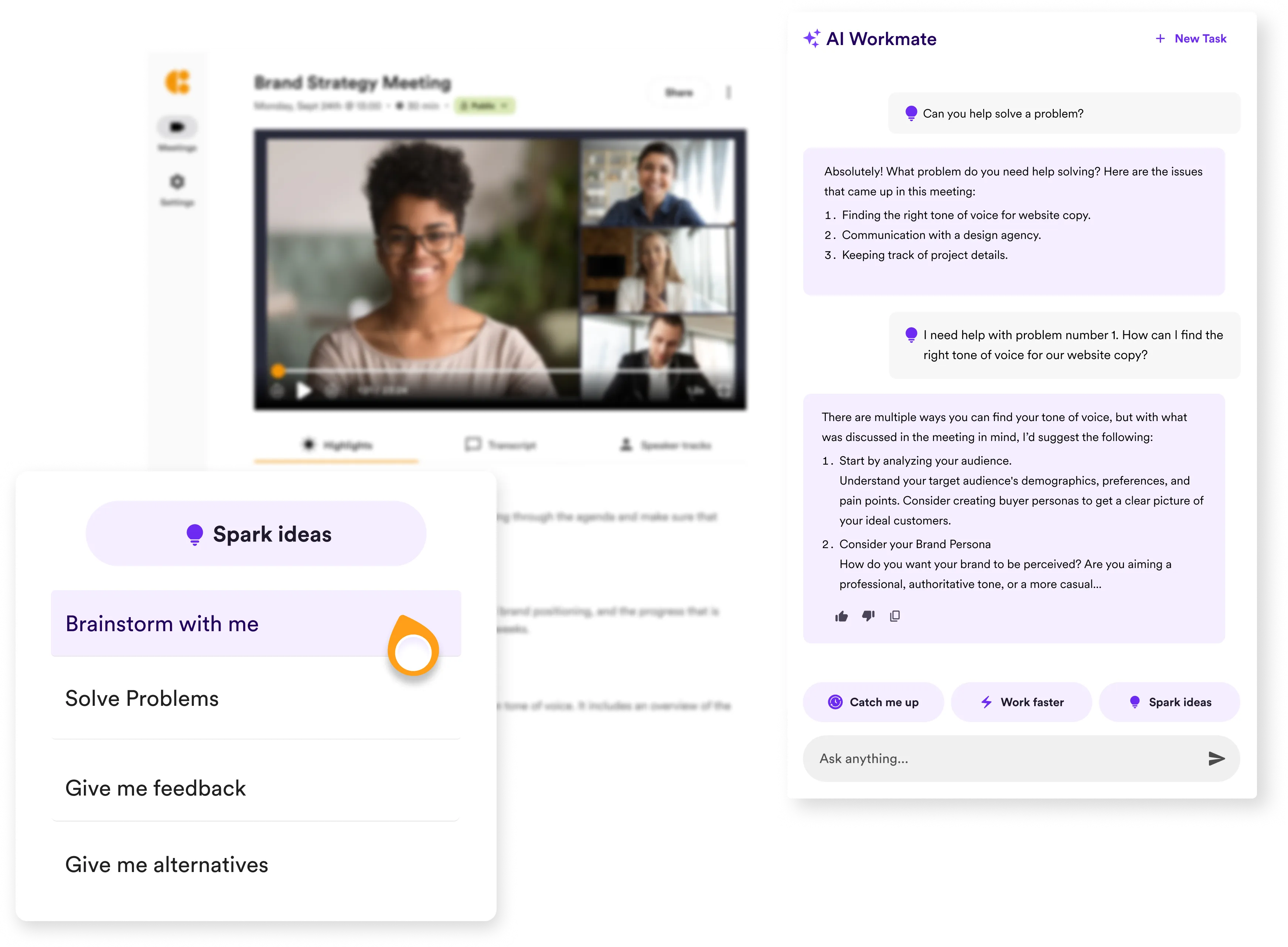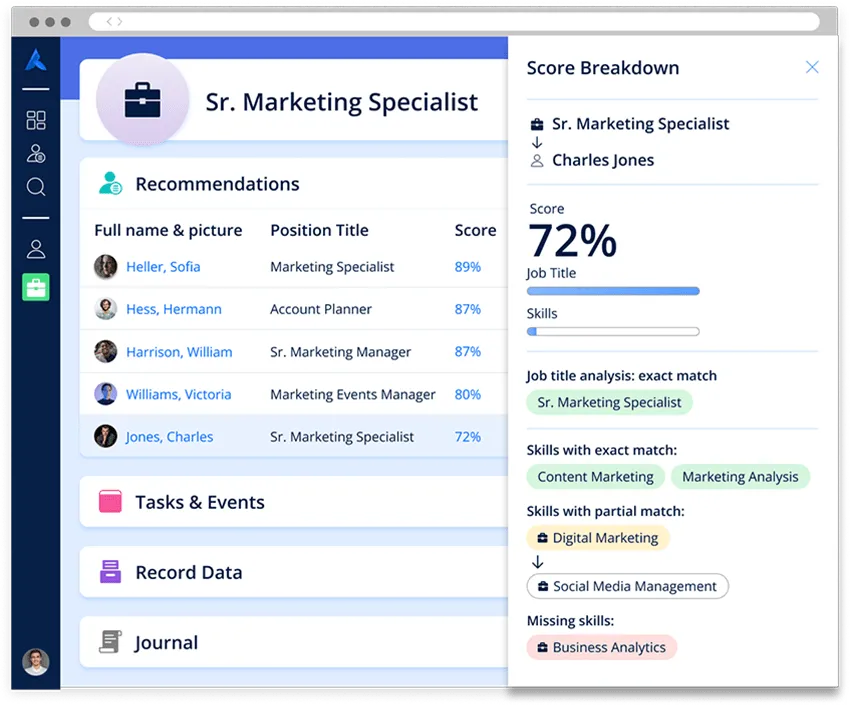Effective Interview Debrief : Everything You Need to Know

Do your interview debriefs feel more like a ritual than a strategic review?
Often, teams rush through post-interview discussions, relying on gut feelings or fragmented observations. This can lead to biased decisions and missed opportunities to hire the right talent.
This article will guide you through establishing a thorough and effective interview debrief process.
What is an Interview Debrief?
An interview debrief is a focused meeting where you and your team review a candidate’s performance after their interview. It’s your chance to pool together all observations and decide if the candidate fits your needs.
In the debrief, each interviewer shares their observations. You’ll discuss the candidate's answers, professional demeanor, and how well their skills align with the job requirements. This is where diverse viewpoints come into play, helping you see a fuller picture and avoid biased judgments that could lead to a poor hire.
Why Make an Interview Debrief?
Conducting an interview debrief is essential for improving your hiring decisions and supporting your team’s development :
- Avoiding bias : by gathering your team to discuss each candidate’s strengths and weaknesses, you compare notes and ensure no single interviewer's bias sways the decision. This collective evaluation helps you make a more informed choice.
- Evaluating candidates comprehensively : during the interview process, different interviewers will focus on various aspects of a candidate’s profile. A debrief session allows you to bring all these perspectives together. This is your chance to ensure that no important details about the candidate's skills or potential cultural fit are missed. By discussing candidates as a team, you ensure that all perspectives are considered and that no single person’s opinion dominates the decision-making process.
- Building consensus : Differing opinions on a candidate are common, especially in diverse teams. A debrief is your opportunity to address these differences head-on. You discuss each team member’s viewpoint, resolve concerns, and ideally, reach a consensus.
- Creating a feedback loop A debrief acts as a feedback loop for your interviewing process. You get to discuss what went well and what didn’t. Was there a question that every candidate found confusing? Did a particular question consistently yield insightful answers? By examining these aspects, you can fine-tune your interview questions and strategies.
Who Should Participate in an Interview Debrief?

Evey party involved in the interview process and the candidate selection should be involved in the final decision. This means :
Interviewers and Hiring Manager
Firstly, everyone who interviewed the candidate should be present at the debrief. This includes all panel members who directly interacted with the candidate during the interview process. Their firsthand insights and observations are invaluable as they can provide specific examples of the candidate’s responses and behaviors.
The hiring manager, who is typically responsible for the final hiring decision, should also attend and lead the meeting. He/she should make sure the discussions stay on track and that all relevant aspects of the candidate’s performance are covered.
HR Representatives or Recruiters
Including an HR representative or a recruiter can be beneficial. They may not have been present during the technical aspects of the interview but can offer valuable perspectives on how the candidate aligns with company values and culture. Additionally, they can help keep the discussion balanced, ensuring that both technical skills and cultural fit are given equal weight.
Diversity and Inclusion Officer
If your company has a Diversity and Inclusion (D&I) officer or someone in a similar role, consider inviting them to the debrief. Their insights can help ensure that the hiring process remains fair and free from unconscious biases.
Optional: A Non-Interviewing Team Member
Including a team member who didn’t interview the candidate can also be beneficial. This could be someone who will work closely with the new hire or a team leader from another department. They can provide a fresh perspective and help assess how the candidate might fit into the broader team dynamics.
How to Effectively Structure your Interview Debrief

Without supervision, an interview debrief can lead to disjointed discussions. Here’s how to ensure it is both efficient and effective :
Step 1: Opening the Meeting
Start by clearly defining the purpose of the debrief. The hiring manager or lead interviewer should outline the agenda and set the expectations for the meeting. This helps keep the discussion focused and ensures that everyone understands the goals of the debrief. It’s also a good time to remind participants of the need for confidentiality and respect for all opinions.
Step 2: Review Each Candidate Individually
Begin with a structured review of each candidate interviewed. Go in a predetermined order, starting perhaps with the candidate who was interviewed first. Each interviewer should provide a brief summary of their impressions, focusing on key strengths, potential concerns, and how well the candidate aligns with the job requirements. This step should be tightly timed to keep contributions concise and on point.
Step 3: Deep Dive into Discussion Points
After the initial summaries, delve deeper into specific areas where there was notable disagreement or particular interest. This is the time to explore any discrepancies in assessments or to discuss any standout moments from the interviews. Encourage open dialogue but ensure it’s structured; possibly use a round-robin format to give everyone a chance to speak without interruption.
Step 4: Score Consolidation and Comparison
If your process includes scoring candidates, review these scores collectively now. This helps visualize where there’s alignment or deviation in team members' ratings. Discuss the reasons behind significantly different scores to understand each interviewer’s perspective better. This step is crucial for making informed decisions based on a balanced view of quantitative and qualitative data.
Step 5: Align on Candidate Suitability
Based on the discussion and scores, start to form a consensus on each candidate’s suitability. The hiring manager should facilitate this part of the meeting, helping to align diverse viewpoints and steer towards a decision. It’s important here to weigh both the individual and collective feedback to decide who could be the best fit for the role.
Step 6: Document the Outcomes and Next Steps
Finally, ensure that all decisions and action items are clearly documented. This includes deciding which candidates will move to the next stage, who might need further assessment, and any other follow-ups required. Having a clear record helps in maintaining transparency and serves as a reference for future hiring activities.
How to Come to the Right Decision in an Interview Debrief
.png)
With multiple perspectives and expectations from recruiters and managers, it's not always easy to reaching the right decision in an interview debrief. Here are some practical tips to get to a common agreement :
Use a Standardized Scoring System
Implement a standardized scoring system to evaluate candidates objectively. This approach helps minimize personal biases and ensures that each candidate is assessed based on the same criteria. After everyone has shared their scores, compare them to see where there are alignments or discrepancies.
Discuss any major differences to understand the reasoning behind each score, which can help clarify any misunderstandings and assist in making a more informed decision.
Prioritize Key Competencies
Before the debrief, agree on the key competencies and skills critical for the role. During the discussion, focus on these areas to evaluate how well candidates meet these essential criteria.
Encourage Open Discussion
Allow for an open discussion where each team member can express their views and concerns about the candidates. Encourage interviewers to provide evidence or specific examples from the interviews to support their opinions.
This practice not only promotes a more transparent evaluation process but also helps the team to consider all aspects of a candidate’s performance.
Address Disagreements Constructively
When disagreements occur, address them constructively. Explore the underlying reasons for different opinions and consider them carefully. Sometimes, a fresh perspective might reveal an important aspect of a candidate’s potential that others might have overlooked.
It’s crucial that these discussions are handled diplomatically to maintain a positive team dynamic.
Review Candidate Potential Beyond the Interview
Consider a candidate’s potential beyond just the interview performance. Discuss their ability to grow within the company and adapt to its culture.
This broader perspective can be crucial for long-term success and should be a part of the decision-making process.
Make a Provisional Decision
At the end of the debrief, aim to make a provisional decision about each candidate. Decide whether they will move to the next stage, require further assessment, or be dropped from the process.
This decision should be agreed upon collectively, ensuring that it reflects the consensus of the group.
Document Everything
Ensure that all decisions and the rationale behind them are well-documented.
This not only helps in maintaining transparency but also serves as valuable feedback for unsuccessful candidates and a reference for future hiring processes.
Making Data-Based Interview Debriefs with Noota
.png)
Want to rely on clear and structured date during your interview debriefs ? Noota enables you to leverage the right candidate details from your interviews :
- Accurate records of your interviews: You no longer need to rely solely on your memory or hastily written notes. Noota provides accurate transcriptions of your interviews, allowing you to revisit the exact words of the candidates during your debrief sessions. This means you can confidently discuss specific details and ensure nothing important is overlooked.
- Easy comparison across interviews: With Noota, all data from interviews is systematically collected and organized. This feature allows you to easily compare responses from different candidates on key questions. You can quickly identify which candidates truly stood out, making your comparison process straightforward and data-driven.
- Focus on Relevant Insights with Data Structuring: Noota helps you structure the interview data by themes or competencies relevant to the role. This structured approach means you can focus your debrief discussion on the most crucial aspects, ensuring that you are making decisions based on criteria that truly matter for the position.
- Quick Access to Key Moments: During your debriefs, you can instantly bring up important moments from the interviews, thanks to Noota’s ability to highlight and tag these segments. This saves you time and enhances the clarity of your discussions, as you can directly reference the candidate’s exact responses or behaviors that caught your attention.
- Deeper Understanding with Sentiment Analysis: Noota’s analysis capabilities extend beyond words to include sentiments and non-verbal cues. This added layer of analysis helps you understand not just what the candidates said, but how they said it, providing deeper insights into their enthusiasm, confidence, and suitability for the role.
Do you want to make more informed decision in your interview debriefs ? Try Noota for free.
Leverage your Interview Data
AI interview notes, scorecard, follow-up, ATS integration, and more...
Related articles

Forget note-taking and
try Noota now
FAQ
In the first case, you can directly activate recording as soon as you join a videoconference.
In the second case, you can add a bot to your videoconference, which will record everything.
Noota also enables you to translate your files into over 30 languages.

.svg)
.svg)
.webp)

.png)


.svg)
